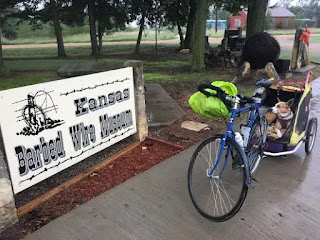In one of my earliest posts, I recalled the messenger bag I carried before messenger bags became fashion accessories for hipsters. I used it as I sluiced through the streets of Manhattan (and, occasionally, beyond) on my bike to deliver things legal and otherwise. In that bag, I carried everything from prints (from a Soho gallery to Judy Collins. Yes, that Judy Collins!) to papers (for contracts to, and possibly on) as well as, believe it or not, pizza. It also bore the weight of secrets I was trying to keep and issues I was avoiding by working a job where I never had contact with anyone for more than a couple of minutes at a time.
Some messengers still use bags like the one I had, except that they're made from different materials than the canvas that formed my workday luggage. Since then, I've seen bicycle delivery folks use everything from "pizza racks" on the front, to panniers on the rear, of their bikes. Some also use baskets of one kind and another.
Lately, I've seen another conveyance that looks the kind of insulated rectangular bags that are sometimes attached to "pizza racks," with backpack straps attached. I imagine that they are handy for making deliveries, but I don't imagine that I'd want to use one to carry loads for any significant amount of time: The boxy shape doesn't look like it would be very comfortable on my back.
They are used, however, for a good reason: It allows bicycle (and, increasingly, e-bike and motorized-bike) riders to make more deliveries in one trip than other kinds of bags or baskets would. That would be especially important, I think, if those who receive the deliveries haven't had much, or anything, to eat in a couple of days--or if you wouldn't find them by knocking on a door or ringing a bell.
Michael Pak uses such a backbox. (Is that a good portmanteau of "backpack" and "box"?) So do some of his fellow delivery people in Los Angeles' Koreatown. But they're not delivering kimchi to young software developers or hipsters. Rather, the grateful recipients of their deliveries live on the neighborhood's streets.
One Monday in August, Pak put out an Instagram post asking for volunteers to help him deliver lunch kits on Friday. "I picked up groceries on Thursday and packed them in my studio apartment while watching a movie," he recalls. "Within an hour, I'd packed 80 lunches and called it a night." He went to bed that night with no idea of who, if anyone, would show up the next day.
To his surprise, about 15 people came out to help him distribute the meals. He realized, though, that his meal distribution could not be a one-time effort. "I realized that for this to work and grow, I had to be consistent and not be afraid to ask for help," he says.
Now, with the help of his friend Jacob Halpern and local volunteers, "Bicycle Meals" is making deliveries in Koreatown, to those without homes, on Mondays and Fridays. The meals they deliver include a sandwich, fruit, water, snacks, hand sanitizer and a mask. "The long term goal is to feed our neighbors every day," Pak declares.
To make his deliveries, he rides a BMX bike "gifted from a friend." The "backbox," is, however, key. "It can store up to 15 lunch kits at once," he explains. "It's one of those Postmates delivery bags I found on Amazon."
I carried a lot in my old messenger bag. But I don't think I delivered anything as important as what Michael Pak delivers in his Backbox.
(Hmm.. Should we call it a Michaelpak?)
Photos by Wray Sinclair.


































